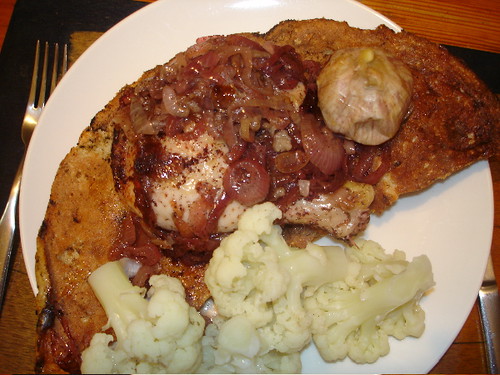Today, with a heavy heart Sarah, Miriam, and I shut down Flavors of Israel. It was a project that we were all very excited about, but work and other things interfered with us devoting as much time as we needed to devote on the website. I haven’t talked about my professional life on the blog, but I do have a demanding full time job in the software industry. This really only leaves me with the weekend to find exciting and interesting food-related adventures to write about and photograph. In my case, maintaining two websites was more than I could handle. But don’t worry, we are all still great friends and plan to continue collaboration in the future. The most important thing is that we all still have our own blogs, with different flavors of Israel; and I intend on still showing you the beauty and bounty, dear readers, of the country that I found love and grown to love, my home, Israel.
Enough with the tears now…
I hope that all of my Jewish friends and family are having a nice time in their Succahs, enjoying family time. David and I spent the first night with a lovely couple in our Moshav.
I already showed you the light dessert I made for the pre-fast dinner for Yom Kippur. The main course was a delicious Spanish dish that originally called for pheasant and pancetta. Since we don’t have access to pheasant here, I made the dish with chicken and did not substitute the pancetta, which you can substitute with smoked goose.
- 6 tablespoons olive oil
- 1 medium onion finely chopped
- 2 medium carrots finely chopped
- 4 garlic cloves thinly sliced
- 4 bay leaves
- 2 cinnamon sticks
- 4 sprigs fresh thyme
-
1
teaspoon
Piment d'Espelette - Basque Red Chili Pepper
- 6 whole cloves roughly ground
- 1 x 400g 14oz tin plum tomatoes, drained, broken up
- 1 large chicken cut into 8 pieces
- 300 ml 1-1/4 cup dry white wine
- 200 g 7oz chestnuts, boiled, fresh or vacuum-packed, cut in half
- Sea salt and black pepper to taste
-
In a large, deep frying pan with a lid
over medium-high heat, add 3 tablespoons of olive oil. When hot, brown all sides of the chicken pieces and set aside.
-
Turn the heat down to medium, add the remaining olive oil, and add the onions, carrots, garlic, bay leaves and cinnamon, and cook for 5-10 minutes until the vegetables begin to caramelize. Add the thyme, paprika and cloves, and stir well for a minute, then add the tomatoes and cook for an additional 5 minutes, stirring occasionally.
-
Add the chicken to the tomato mixture and then add the white wine. Reduce the heat and simmer over a low heat with the lid on for 20-40 minutes. Then add the chestnuts and continue to cook for about 10 minutes. Season with salt and pepper if necessary.









































